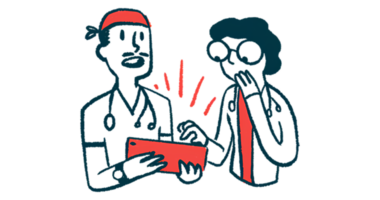This Thanksgiving, I am thankful for the changes in hemophilia care
Let us celebrate this season with renewed hearts and minds

Moving is challenging.
Moving means packing, having to decide what to keep and what not to keep, learning a new place, having to find a new grocery store, a new hair and nail salon, a new healthcare provider.
Doing all that this time offered an opportunity to remember and be thankful about how much has changed in hemophilia care after I told a new doctor that I have two sons with severe hemophilia.
“A or B?” she asked. I did a double-take. I thanked her and told her that question is rarely asked. Over the years, I have encountered many medical professionals who are unaware of the differences between the types. When she asked about treatments, I told her how hemophilia with an inhibitor manifested differently in my 29-year-old son, Julian, than it did in his 19-year-old brother, Caeleb, who has endured joint damage and lives with chronic pain.
It felt good to be able to tell this doctor that the landscape of hemophilia treatment has evolved and been life-changing for both my sons.
Then it dawned on me: It’s been almost eight years since Caeleb began a new medication. It doesn’t require infusions. Instead, an injection similar to a needle stick for diabetes is needed once or twice a month. Before it, Caeleb was infusing through a port every day. The transformation is not just a change, but a revolution that inspires hope and shows the potential for progress in healthcare.
Julian treats his condition with the same medication. It enables him to travel to auditions and perform with ease. He is chasing his dreams with his hemophilia under control — a testament to the possibilities that new treatments can bring to someone with a chronic disease.
Finding gratitude in good times and bad
With the season of Thanksgiving upon us, I celebrate all that I have to be thankful for, including the life-changing advances in hemophilia treatment.
Talking to the doctor reminded me of the days when 10 large boxes were delivered to my doorstep, filled with factor and supplies for Caeleb’s monthly treatment. Now his monthly shipment comes in a box that weighs less than 2 pounds.
I remembered the sleepless nights, waking up to infuse him every two hours to treat a prolonged bleed. Keeping morphine at a consistent level for the most serious bleeds also meant keeping to a schedule to administer medication. And the hospital stays, which often lasted for weeks on end, meant missing work and disrupting family schedules. It was exhausting.
Because I remember what it was like, I am able to be thankful for how things are now. Still, it can be easy sometimes to take things for granted. Having food in the refrigerator, being able to walk, keeping chronic pain under control, and having a roof over my head are a few of my blessings.
This year, I ask my readers: How do you find gratitude in the midst of difficulties, such as hemophilia or any chronic or rare condition?
Let us celebrate this season with renewed hearts and minds. Find joy in the small things and share your thanks and love with others. I also encourage you to share your own stories of gratitude and hope. By doing so, we can inspire others and foster a sense of community.
Note: Hemophilia News Today is strictly a news and information website about the disease. It does not provide medical advice, diagnosis, or treatment. This content is not intended to be a substitute for professional medical advice, diagnosis, or treatment. Always seek the advice of your physician or another qualified health provider with any questions you may have regarding a medical condition. Never disregard professional medical advice or delay in seeking it because of something you have read on this website. The opinions expressed in this column are not those of Hemophilia News Today or its parent company, Bionews, and are intended to spark discussion about issues pertaining to hemophilia.








Leave a comment
Fill in the required fields to post. Your email address will not be published.